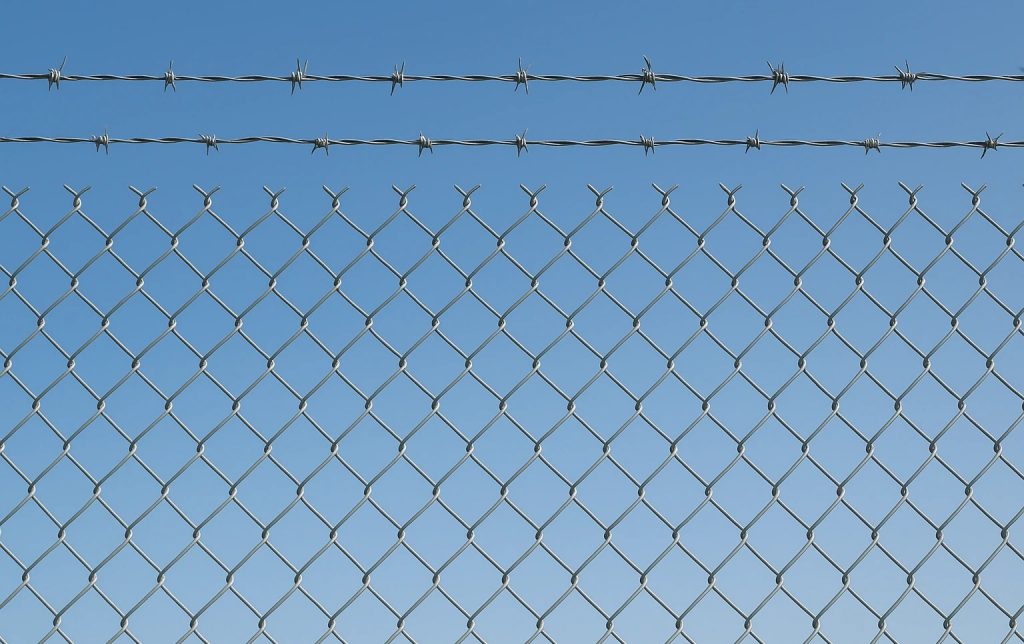Perimeter Security: A Comprehensive Overview highlights the critical role fences, barriers, and technologies play in protecting businesses, industrial facilities, and institutions. Perimeter security is more than building walls—it integrates planning, compliance, and modern innovations to create layered defense systems.
Why Perimeter Security Matters
For businesses, perimeter security is the first and most visible line of defense. Strong fences and boundaries allow companies to:
Control access points for staff and visitors.
Deter theft, vandalism, and trespassing.
Comply with safety and zoning requirements.
Enhance the professional appearance of the property.
When designed strategically, perimeter protection safeguards both physical assets and business operations.
Chain Link Fence as a Versatile Solution
Among the most widely used options, the chain link fence offers affordability and adaptability. For large commercial properties or storage facilities, chain link provides visibility, easy installation, and flexibility. Privacy slats, barbed wire, or security mesh can be added to increase deterrence. This makes it a preferred choice for projects where coverage of wide areas is required without excessive cost.
Integrating Technology Into Perimeter Security
Physical barriers today are enhanced by smart technology:
Surveillance cameras mounted directly on fences.
Electronic access gates with keycard or biometric systems.
Sensors that detect tampering or forced entry attempts.
LED lighting integrated with fencing lines for energy-efficient visibility.
These innovations turn traditional barriers into interactive security systems.
Steel Fence for High-Security Applications
When maximum strength is required, the steel fence is the industry standard. Its heavy-duty construction withstands harsh weather and industrial environments, making it ideal for manufacturing plants, warehouses, and sensitive facilities. In high-security zones, steel fences can be paired with razor ribbon, anti-climb panels, and monitoring systems to provide uncompromising protection.
Regulatory and Compliance Considerations
Every city enforces codes that dictate how fences must be installed. These include:
Height limits depending on zoning.
Minimum setbacks from property lines and sidewalks.
Restrictions on certain materials in commercial districts.
Partnering with specialists in Commercial Fences Chicago Il ensures that installations not only meet business needs but also comply fully with legal requirements, avoiding fines or redesigns.
Vinyl Fence for Aesthetic and Low-Maintenance Needs
Not all perimeter solutions prioritize heavy-duty security. In districts where appearance and maintenance are key, the vinyl fence is a practical alternative. It offers privacy, complies with local codes, and requires little upkeep. For office parks, schools, or facilities in urban zones, vinyl fencing provides a clean, professional look without compromising on security.
Cost and Maintenance Planning
Budgeting for perimeter security goes beyond installation costs. Businesses must also consider:
Permit and inspection fees.
Regular maintenance depending on materials.
Long-term upgrades like access control or lighting systems.
For example, chain link fences may require occasional repairs, steel fences need protective coatings to prevent rust, while vinyl fences are virtually maintenance-free. Balancing these costs ensures long-term efficiency.
Complementary Security Measures
Fences are most effective when integrated with additional measures:
Landscaping designs that discourage climbing or access.
Warning signs that act as psychological deterrents.
Security personnel to monitor and respond to threats.
This layered strategy ensures that if one barrier fails, others remain active.
External Resource for Guidance
For authoritative information on best practices, the U.S. Department of Homeland Security – Perimeter Security Guidelines offers detailed insights and compliance resources.
This external source enhances credibility without linking to competitors.
Conclusion
Perimeter security is an evolving discipline that combines traditional barriers with advanced technologies and compliance requirements. From the cost-effective adaptability of chain link to the heavy-duty resilience of steel and the low-maintenance appeal of vinyl, businesses have options tailored to their needs. By planning carefully, budgeting for compliance, and working with professionals, companies can create reliable systems that protect assets, people, and operations. Strong perimeter security is not just a necessity—it is an investment in safety and long-term business stability.

